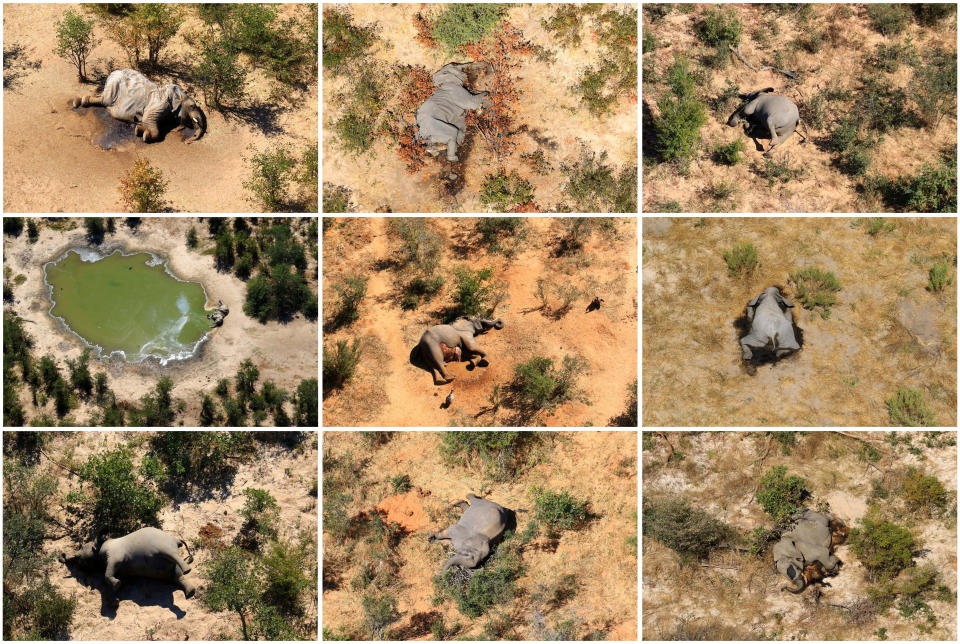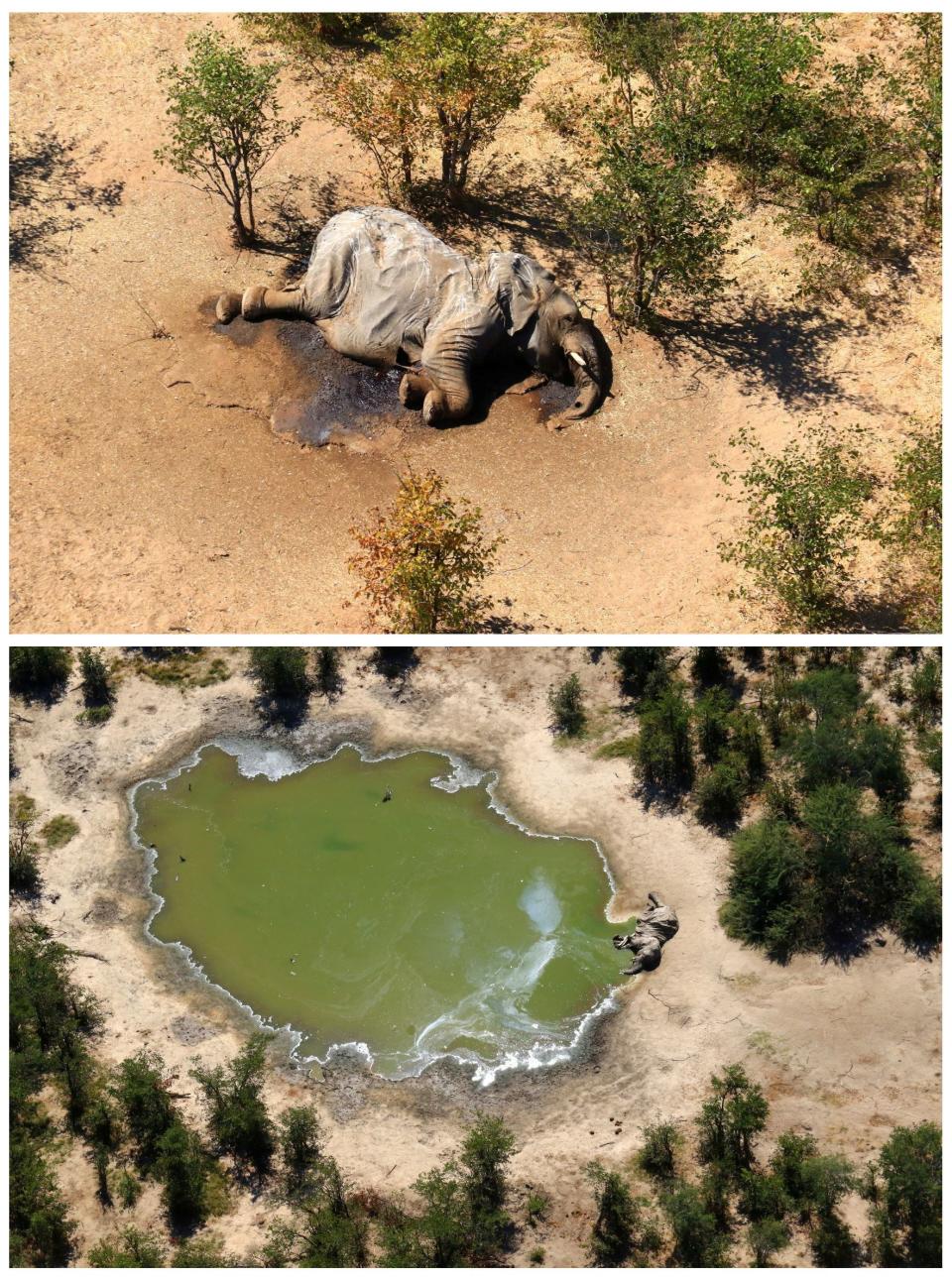Mystery of 300 dead elephants in Botswana solved as bacteria blamed for deaths
Watch: Botswana elephant deaths 'caused by toxins'. VIDEO CONTAINS GRAPHIC MATERIAL
The deaths of hundreds of elephants in Botswana, which had left conservationists baffled earlier this summer, have been blamed on a neuroxin produced by bacteria.
Officials in the area said that cyanobacteria was behind the 300 deaths.
Cyanobacteria occur commonly in water, but those that produce toxins are becoming more common due to climate change, officials said.
Read more: Nature crisis - new global extinction target agreed

Elephant carcasses were spotted in Botswana’s Okavango delta in May and June. The country is home to up to a third of Africa’s declining elephant population.
Cyril Taolo, deputy director of the Department of Wildlife and National Parks, told a news conference the number of elephant carcasses found since deaths were first reported around early May had risen to 330, from 281 in July.
He said: “What we just know at this point is that it’s a toxin caused by cyanobacteria.”
Taolo said that the specific type of neurotoxin had yet to be established and that, for now, there was no evidence to suggest that Botswana’s wildlife was still under threat as the deaths appear to have ceased.

Other animals in the Okavango Panhandle region appeared unharmed.
Mmadi Reuben, the department’s principal veterinary officer, told the same news conference that questions remained as to why only elephants had been affected.
Read more: Melting snow in Himalayas drives growth of green sea slime visible from space
Some cyanobacterial blooms can harm people and animals, and scientists are concerned about their potential impact as climate change leads to warmer water temperatures, which many cyanobacteria prefer.
“It amounts to having the right conditions, in the right time, in the right place and these species will proliferate,” said Patricia Glibert, a professor at the University of Maryland Center for Environmental Science who has studied cyanobacteria, told Reuters.
“These conditions are coming together more often, in more places, so we are seeing more of these toxic blooms around the world.”
Read more: Why economists worry that reversing climate change is hopeless
In neighbouring Zimbabwe, about 25 elephant carcasses were found near the country’s biggest game park and authorities suspect they succumbed to a bacterial infection.
The animals were found with tusks intact, ruling out poaching and deliberate poisoning.
Parks authorities believe the elephants could have ingested the bacteria while searching for food. The carcasses were found near water sources.
“We considered the possibility of cyanobacteria but we have no evidence that this is the case here (in Zimbabwe),” said Chris Foggin, a veterinarian at the Victoria Falls Wildlife Trust, which tested samples from dead elephants from Zimbabwe and Botswana.

 Yahoo News
Yahoo News 

